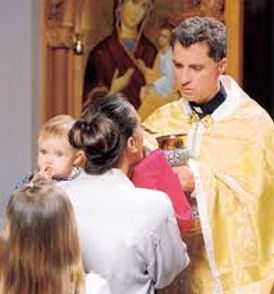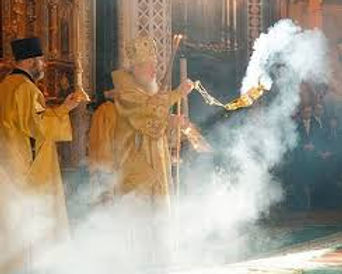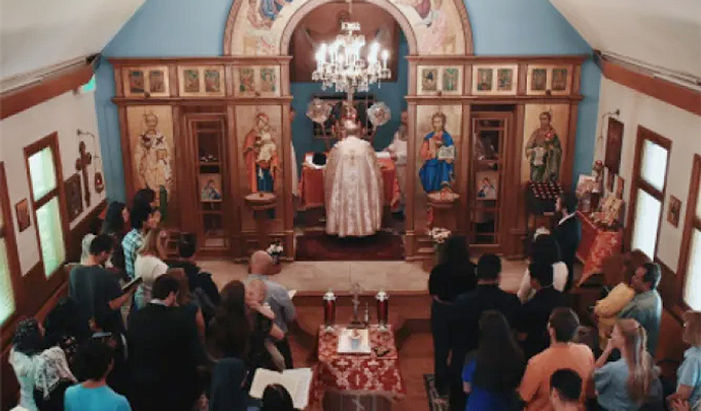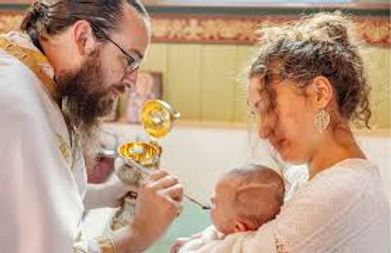Common Questions and Answers
Are you Catholic?
In short, yes!The Byzantine Catholic Church (Ruthenian) is one of the 24 Eastern Catholic Churches in full communion with the Pope of Rome, together forming the universal Catholic Church. Rooted in the rich spiritual and cultural heritage of ancient Constantinople, our Church offers a unique and awe-inspiring way to encounter Christ.
"The contribution that the Christian East can offer us today is immense...We have great need to recover the sense of mystery that remains alive in your liturgies, liturgies that engage the human person in his or her entirety, that sing of the beauty of salvation and evoke a sense of wonder at how God's majesty embraces our human frailty!" --Pope Leo XIV, May14, 2025

Can Roman Catholics receive the sacraments in a Byzantine Church?
Absolutely! As a Church in full communion with Rome, any properly disposed Catholic can receive Holy Communion and go to Confession in our parishes. Marriage and baptism do require a dispensation from the local bishop. We warmly welcome our Roman Catholic brothers and sisters to share in our sacred mysteries.



What to Expect at Divine Liturgy
Welcome, first-time visitor! We’re thrilled to have you join us for the Divine Liturgy, a transformative journey that typically lasts about 90 minutes. Additional blessings, such as baptisms, may extend the service. Here’s a quick guide to help you feel at home:
Immerse Yourself: Don’t worry about “getting it right.” Watch, listen, and follow along with the congregation—most of us were newcomers once! Ask a parishioner if you have questions; we love sharing our faith.
Chanting Galore: Nearly everything is sung or chanted, creating a heavenly atmosphere.
“Lord, Have Mercy!”: You’ll hear this prayer often, a heartfelt plea for God’s grace.
Incense Everywhere: We use incense generously to bless the church, icons, people, and the Holy Gifts, symbolizing our prayers rising to heaven.
Crossing Ourselves: We make the Sign of the Cross frequently to honor the Holy Trinity and whenever the Spirit moves us. In the Byzantine tradition, we cross from right to left, an ancient custom.
Standing for Worship: Standing is the norm, reflecting our resurrection faith, but feel free to sit if needed—no one will mind.
Receiving Communion: Holy Communion is distributed by spoon, with the Body and Blood of Christ mingled in the chalice. Simply open your mouth wide, keep your tongue back, and let the priest place the Eucharist in your mouth. No need to say “Amen”—the priest speaks for you.
A Feast for the Senses: The Divine Liturgy engages all your senses—sight, sound, smell, and touch—elevating your soul to the Mystical Banquet of the Lamb in heaven.
Do infants and children receive the Eucharist?
In the Byzantine tradition, we’ve preserved the ancient practice of the early Church, where all the faithful—infants, children, and adults—receive the three sacraments of initiation (Baptism, Chrismation/Confirmation, and Eucharist) together. This reflects our belief that even the youngest members of the Church are called to full participation in Christ’s life.


Do you kneel during the consecration?
In our tradition, we stand throughout the Divine Liturgy as a sign of resurrection joy. Kneeling is associated with penance, not adoration. Instead of kneeling, we offer a profound bow during the Words of Institution and the Epiclesis (the invocation of the Holy Spirit over the Gifts), expressing our reverence for the Eucharistic mystery.